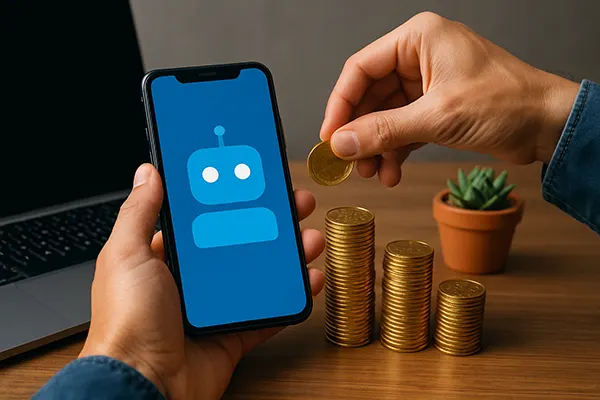Earning with Telegram Bots: Development, Promotion and Monetisation

Telegram bots have evolved from simple tools into fully functioning digital assistants and business instruments. In 2025, they offer an accessible way to automate services, provide customer support, and earn money. With a growing user base and extensive bot functionality, Telegram remains a powerful channel for those looking to build a revenue-generating online product.
How to Create a Telegram Bot That Works
Setting up a Telegram bot begins with talking to BotFather, the official bot management tool by Telegram. After assigning a name and receiving a unique token, developers can start using Telegram’s Bot API. For non-coders, platforms like Manybot or Chatfuel provide no-code solutions for simple bots, making entry-level development easier than ever.
Functionality is the key. Telegram bots can manage subscriptions, process payments using Telegram Payments 2.0, answer queries with AI, or connect users with databases. With the introduction of web apps inside Telegram, the bots now behave more like lightweight mobile apps, enhancing user interaction and monetisation potential.
In 2025, integrating AI and natural language processing has become more common, allowing bots to understand complex queries. Moreover, developers can now include adaptive menus, in-app games, or subscription services with minimal technical investment, making it easier to generate long-term engagement and profits.
Technical Tools and Hosting Requirements
Telegram bots run on webhooks, which means they need stable hosting to work 24/7. Providers such as Heroku, Railway or Vercel offer convenient free plans for prototyping, while DigitalOcean and AWS serve better for scalable projects. Bots can be coded in Python, Node.js or PHP – with open-source frameworks like aiogram or Telegraf widely adopted.
Security matters. In order to store user data or handle payments, bots must be compliant with GDPR and other privacy regulations. Using HTTPS and securing tokens in environment variables are essential practices for protecting user information and business integrity.
Regular testing and monitoring through logging tools like Loggly or built-in console outputs ensures your bot performs reliably. Also, bots should be optimised for different devices and languages, especially if targeting international markets.
Promotion Strategies That Deliver Real Users
Creating a functional bot is only half the battle — attracting users requires strategic promotion. Telegram’s internal discovery is limited, so external marketing plays a crucial role. Use niche-specific forums, YouTube explainer videos, and Reddit groups to spread awareness. Collaborations with influencers or admins of large Telegram channels can rapidly grow an audience.
Paid advertising via platforms like Google Ads or Facebook can target potential users by interest, while integrating your bot into an existing ecosystem (e.g., Discord communities, SaaS products) helps build organic traction. Don’t forget SEO: optimising your bot’s landing page for keywords relevant to its function is critical.
Cross-promotion with other Telegram bots, offering referral systems, and publishing content on Medium or dev.to help establish credibility and backlinks. The key is consistency and targeting platforms where your potential audience already spends time.
Analysing Performance and Retention
Once the user base starts growing, tracking user behaviour is essential. Tools like Amplitude, Mixpanel, and Google Analytics (via proxy pages) help understand how users interact with your bot. These insights allow you to refine onboarding, improve flows, and reduce bounce rates.
Retention is often overlooked but crucial for profitability. Regular content updates, triggered push messages, and seasonal campaigns improve engagement. For subscription-based bots, A/B testing different pricing models or promotional trials can uncover the most effective approach.
Bot feedback loops — short polls, rating buttons, or simple “Was this useful?” prompts — provide instant data on satisfaction and help you evolve your product in a user-driven direction. The more responsive and adaptive your bot is, the more valuable it becomes.

Monetising Telegram Bots in 2025
Monetisation has matured thanks to Telegram’s integration with third-party payment providers. You can now accept payments through Stripe, Payme, and local solutions in various currencies directly inside the bot interface. Telegram takes no commission, making it an efficient channel for digital sales.
Popular monetisation models include paid subscriptions, pay-per-access features, donations, affiliate links, or selling digital goods like PDFs, templates, or access to exclusive groups. Freelancers also create bots for clients — offering them as a service with monthly maintenance fees.
Telegram has recently introduced Ads for bots in selected markets, enabling bot creators to display promotional messages for revenue. Partnering with businesses or integrating sponsored content can open new passive income streams for creators with established audiences.
Legal and Ethical Aspects of Profit Generation
It is critical to comply with local and international laws. For bots operating across borders, check tax obligations, e-commerce regulations, and digital service compliance. EU-based operators must follow GDPR, and creators in other regions need to study their specific legal environments.
Transparency matters. Inform users about what data you collect and how you use it. Including terms of service and privacy policy builds trust and ensures compliance with platform requirements.
Finally, avoid deceptive monetisation tactics. Bots that overpromise, trick users into subscriptions, or harvest personal data face bans and reputational damage. Prioritise user value, and profitability will follow naturally.
